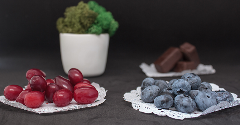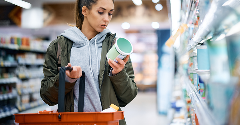What role do omega-3s play in sports nutrition?
10 Jul 2018Omega-3 fatty acids have increasingly become part of athletes’ nutritional regime over the past few years but research supporting their role in sports nutrition is still in its early stages.

Omega-3 supplementation for sportspeople tends to be focused on general wellbeing, as about 80% of the world’s population is thought to consume less than 250 mg per day, according to a 2016 review. The European Food Safety Authority concluded in 2009 that 250 mg should be the reference intake value for long-chain omega-3 fatty acids, and an analysis published in the British Journal of Nutrition in 2011 also identified 250 mg of EPA and DHA omega-3s as the threshold for cardiac risk reduction.
Many of the most well-established benefits of omega-3s are cardiovascular-related, such as reducing levels of triglycerides and blood cholesterol, and maintaining normal blood pressure and cardiac function, so it makes sense to ensure sportspeople have adequate levels.
However, researchers and suppliers have turned their attention to the specific performance and recovery-related benefits that could be associated with omega-3s. Indeed, omega-3s are emerging as an important consideration in sports nutrition, on the one hand for their contribution to athletes’ overall health, and on the other primarily for their anti-inflammatory effects.
Krill-derived omega-3 supplier Aker BioMarine, for example, has conducted its own research suggesting supplementation could improve thigh strength during cycling and improve recovery among triathletes. The company’s pilot study used a high dose omega-3 supplement of four grams per day.
GOED, a non-profit industry organisation that aims to increase global omega-3 intakes, says 250 mg should be seen as a minimum, rather than an optimum, level of consumption and says there could be additional benefits associated with high dose supplementation.
Other studies have suggested that omega-3s could help reduce muscle pain after exercise, and counterbalance exercise-induced inflammation made worse by the high levels of omega-6 fatty acids common in western dietary patterns. Supplier DSM, which provides both fish-derived and algae-derived omega-3s, has also cited animal studies that suggest omega-3s might help recovery after sports-related traumatic brain injuries.
Whether this promise translates into market opportunities for food, drink and supplement makers largely depends on whether further research backs such findings. For now, many sports nutrition products make no claims about the specific sports-related functions of omega-3 in their products, perhaps mentioning more general heart health benefits. Others simply highlight omega-3 on pack, and allow consumers to draw their own conclusions.
Related news

Plastic packaging reduction requires industry rethink
6 Jan 2023
The food and beverage sector is calling for industry-wide collaboration and business model updates to reduce the environmental impact of plastic packaging.
Read more
Misleading nutrition claims mask true sugar levels in baby food
5 Jan 2023
Some baby and toddler food and drink products, sweetened with fruit concentrate, contain up to four teaspoons of sugar per serving yet are marketed as having ‘no added sugar’, according to a survey by Action on Sugar.
Read more
Asian beverage brands deal with rising costs
4 Jan 2023
Decreasing bottle sizes or increasing prices? Asian beverage brands are finding “creative approaches” to manage rising costs, according to industry analysts.
Read more
Preserving the freshness of food to fight waste
3 Jan 2023
Several companies are producing products that absorb ethylene, the hormone that causes food to ripen, in attempt to reduce food waste.
Read more
Value-seeking US consumers cut back on food spending
2 Jan 2023
Cheaper items, smaller sizes, and shorter grocery lists: inflationary effects coupled with a global long-term recession are set to continue shaping food spending habits, according to a recent Rabobank report.
Read more
Opportunities grow for lower-caffeine coffee
23 Dec 2022
Many consumers want the mental focus of caffeine without the jitters, prompting a wave of product development such as “half caffeine” ground coffee or ready-to-drink (RTD) cold brew blended with relaxing botanicals.
Read more
Superfrau upcycles liquid whey for energy drinks
22 Dec 2022
US company Superfrau turns surplus whey into sustainable, upcycled-certified dairy products for the recovery drinks market.
Read more
Malaysian brand Nanka brings jackfruit range to Europe
21 Dec 2022
Malaysian brand Nanka is expanding to new Asian and European markets with its fast and ready-to-eat plant-based products based on jackfruit.
Read more
Is the UK on target to meet its 2025 Plastics Pact?
20 Dec 2022
Major food industry players, including Arla, Kerry, PepsiCo and TerraCycle, have signed the UK’s voluntary Plastic Pact to reduce plastic from the supply chain – but are they on track to meet their targets?
Read more
Chinese food brand wants to give customers ‘the full experience’
16 Dec 2022
Food brand Xiao Chi Jie is revamping Chinese cuisine for the modern American consumer. The Washington-based company sells regional Chinese specialties like soup dumplings, noodle kits, and barbeque skewers direct-to-consumer in the US.
Read more